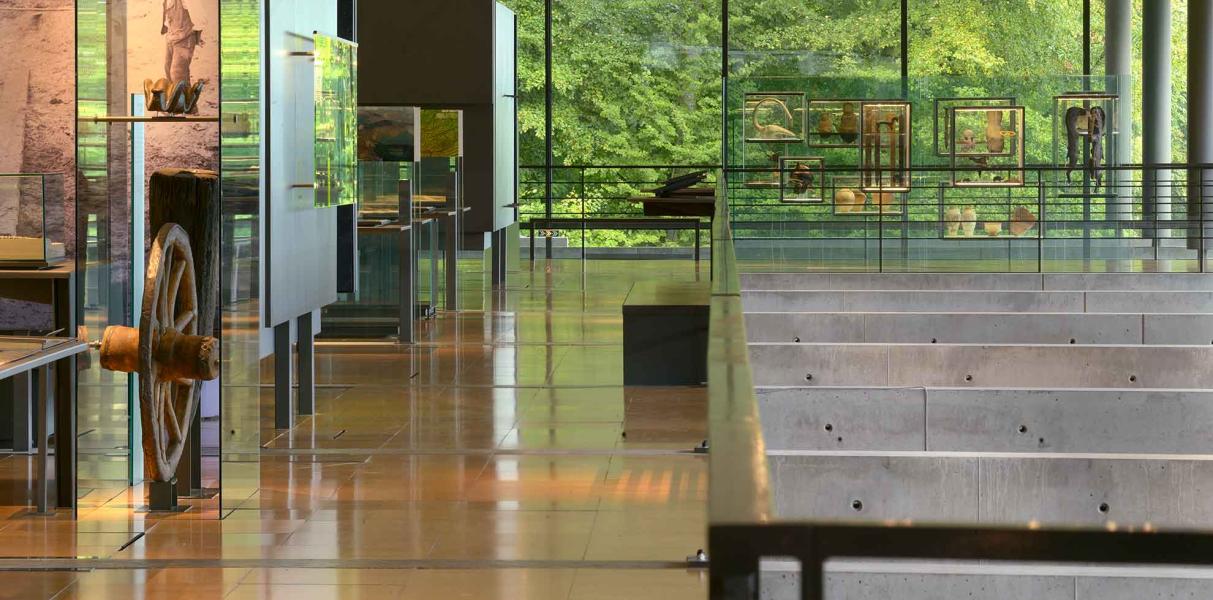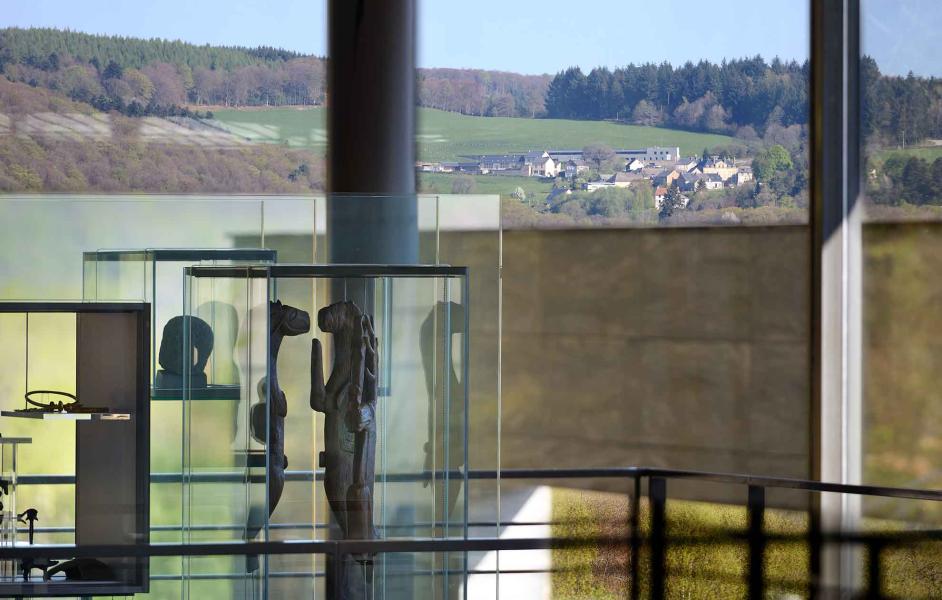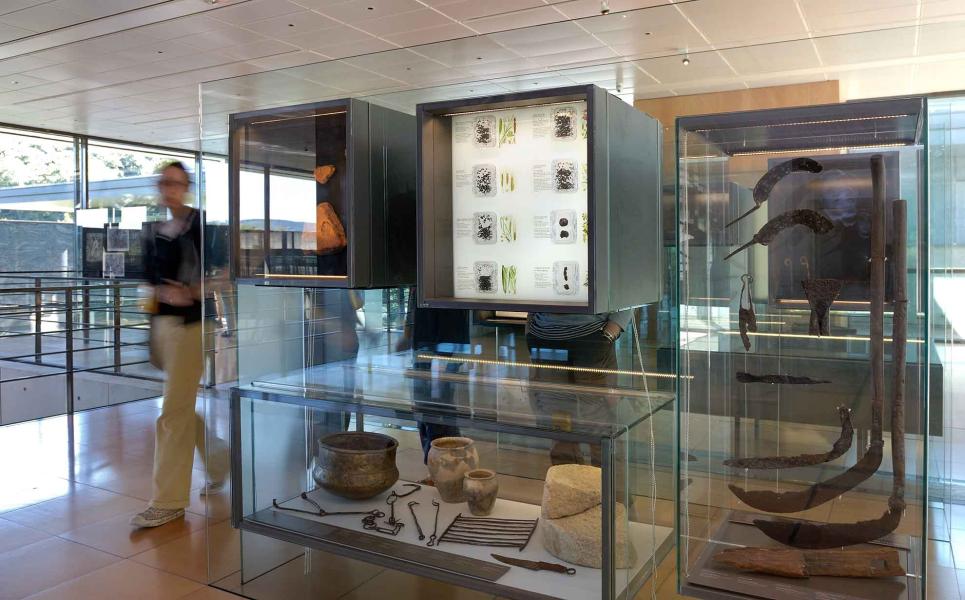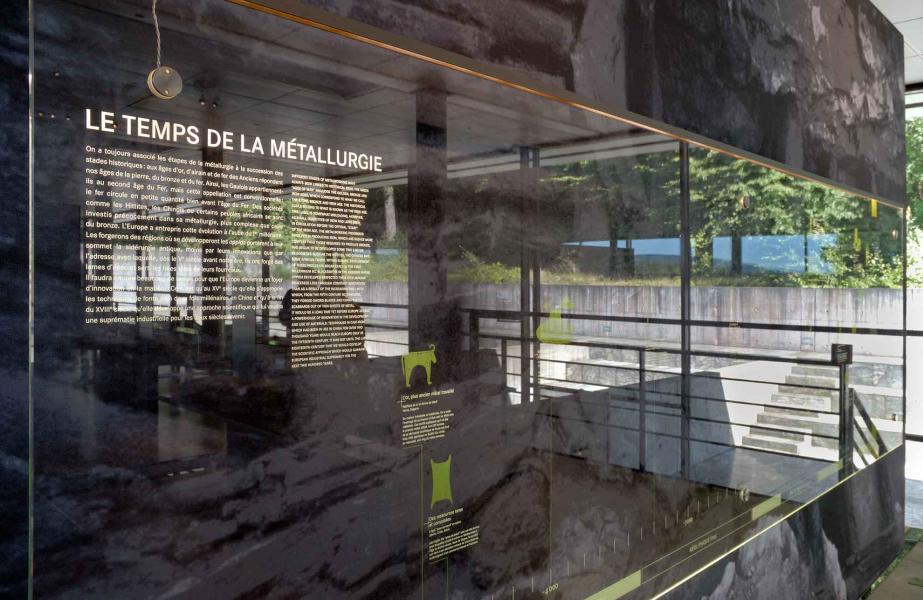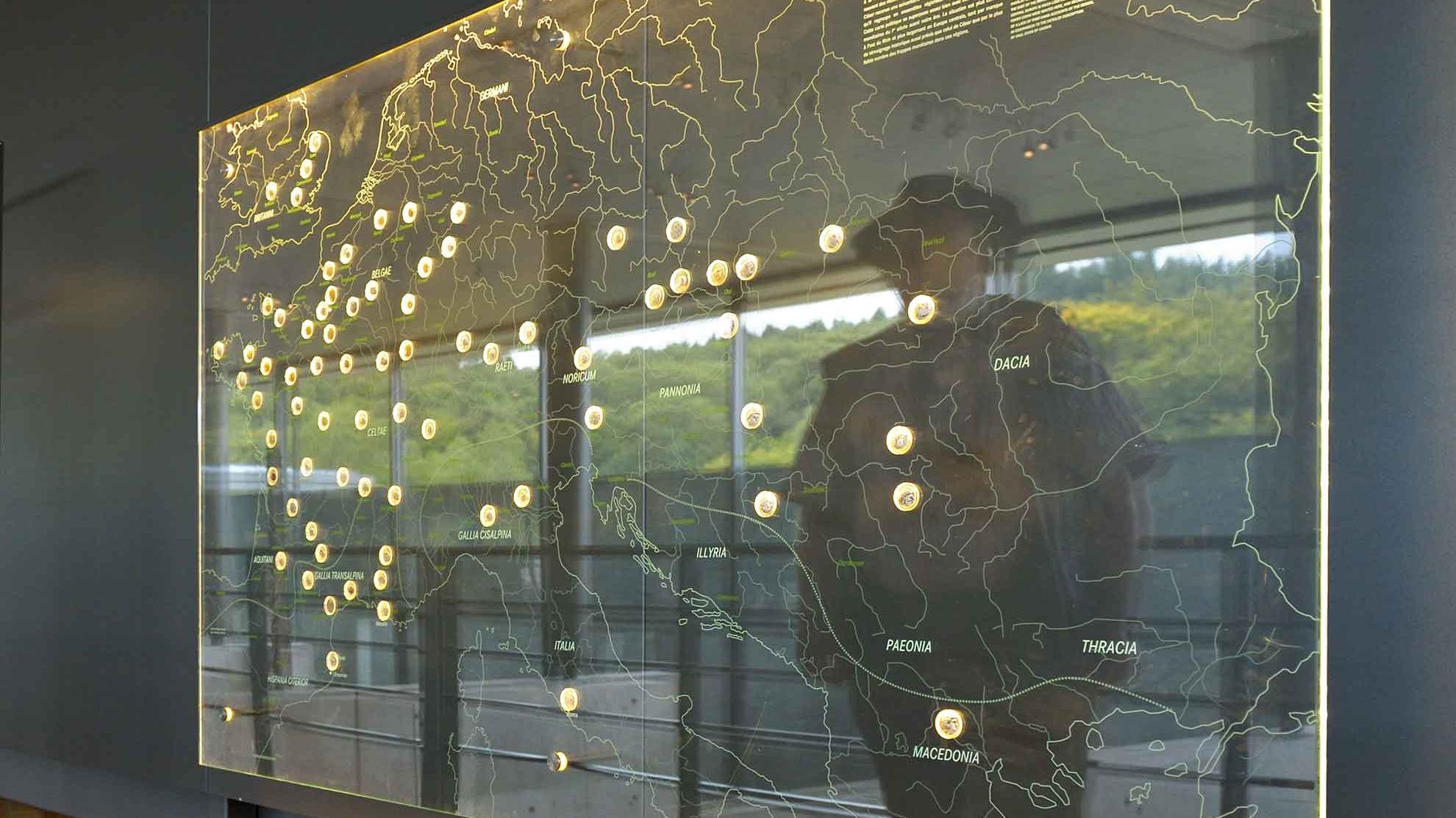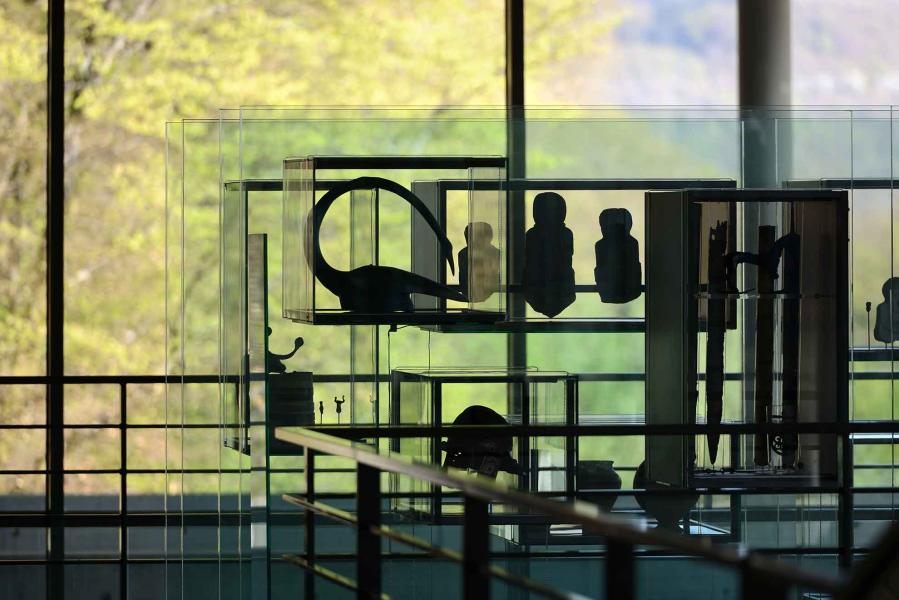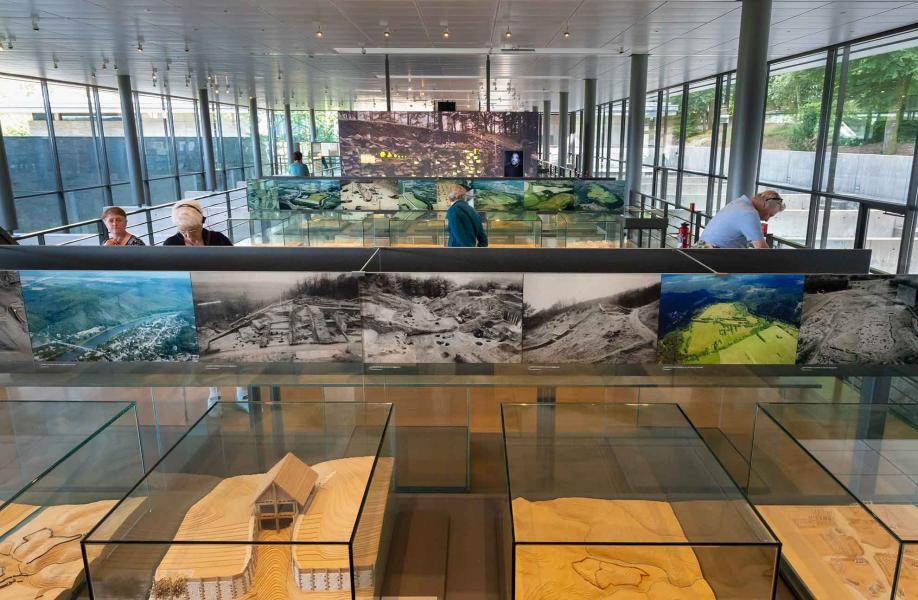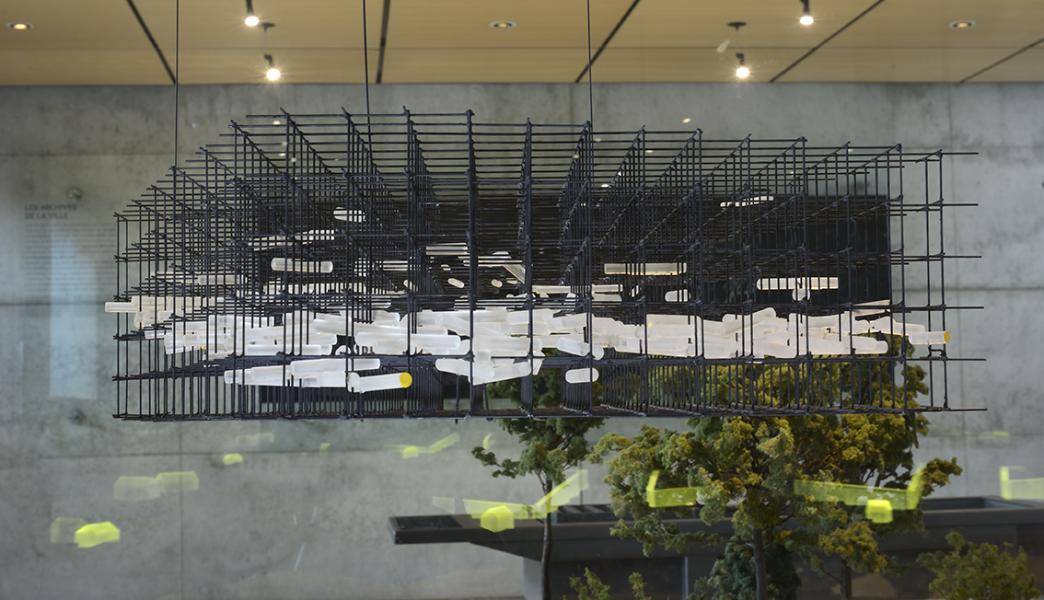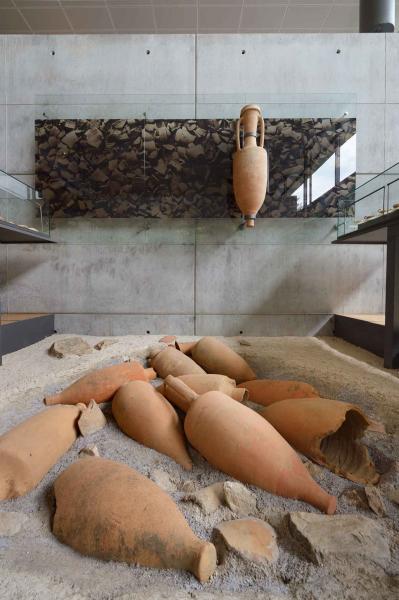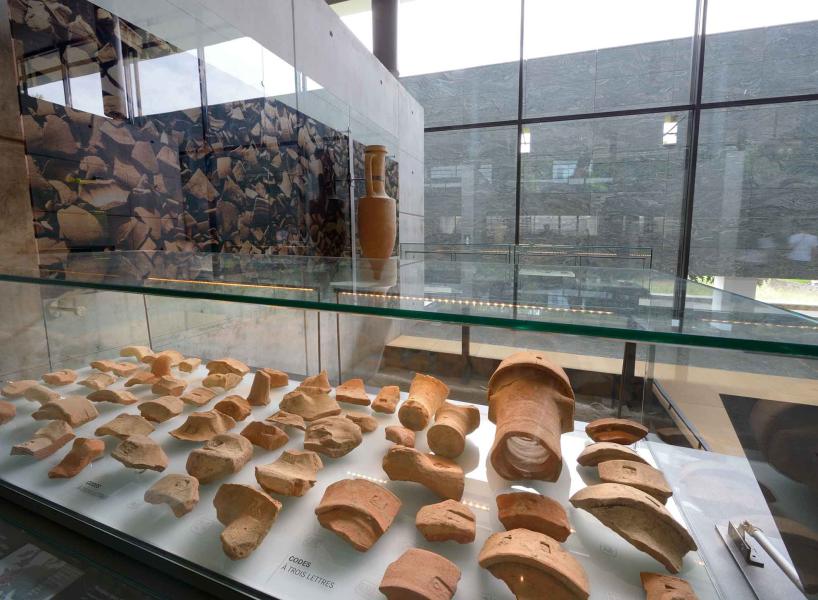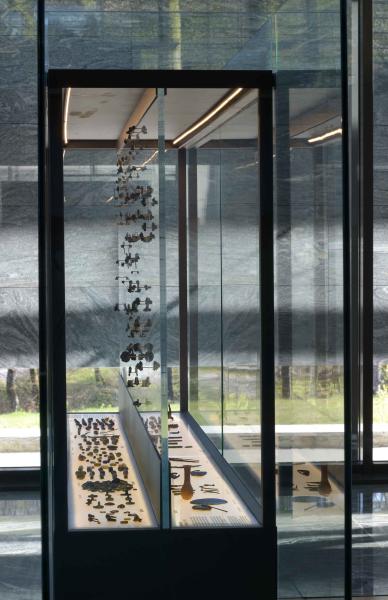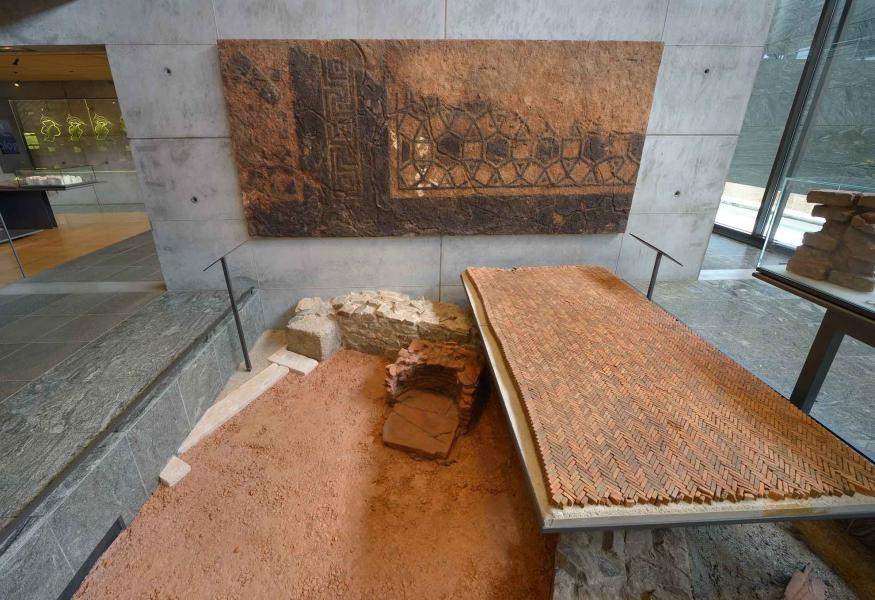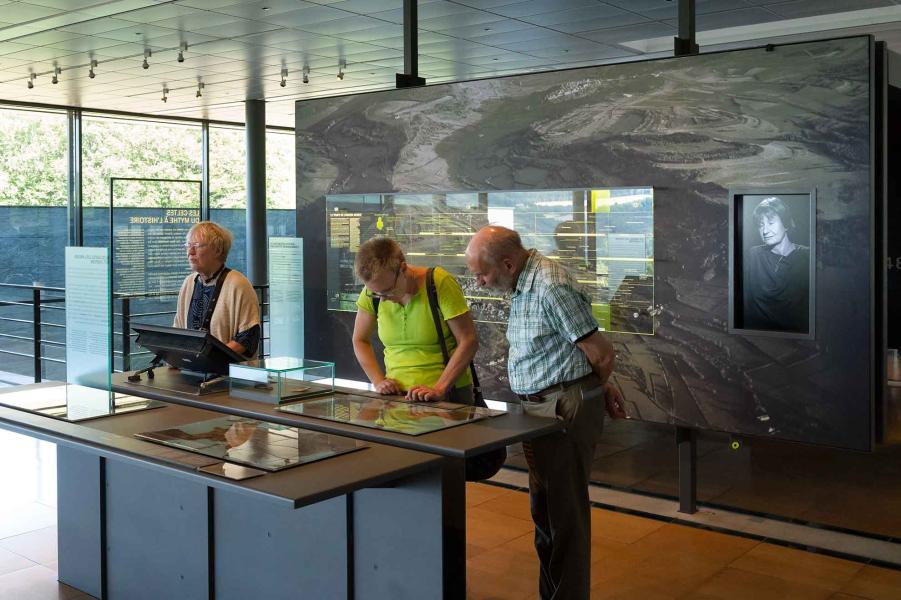How can a town like Bibracte, which only lived for a hundred years, be so representative of a pivotal period in history? This is what you will discover when you visit the museum, located at the foot of the archaeological site.
Opening dates and times
In 2024, open every day from 16 March to 11 November, from 10am to 6pm.
In July and August, open from 9.30am to 7pm.
BIBRACTE AND BEYOND
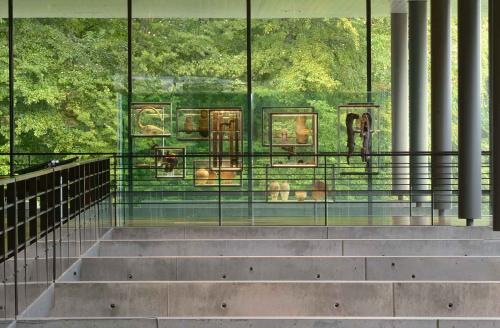
THE COURSE
VIRTUAL GALLERY
AND BIBRACTE COMES BACK TO LIFE...
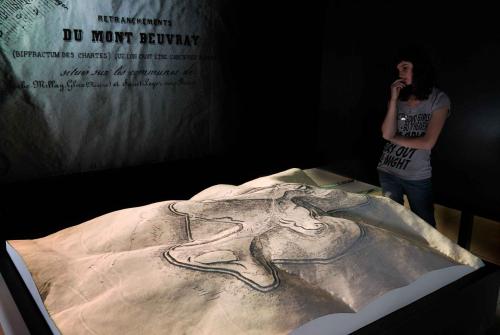
THE TOWN'S ARCHIVES
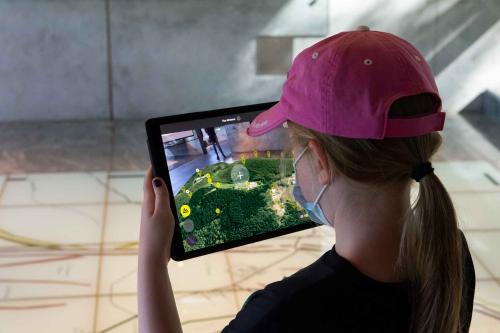
THE ARCHITECTURE
Set against the forest, the building, designed by the architect Pierre-Louis Faloci, plays on the metaphor of archaeology: the materials used evoke the succession of ages of humanity, from the rough stone of the foundations to the zinc and steel of the roof, via the polished stone of the façades. The omnipresence of the square in the framework of the building recalls the grids of the excavation sites.
The two galleries of the permanent exhibition play on transparency and open onto the forest under which the remains of Bibracte lie.
The year after its inauguration, in 1996, the Bibracte Museum was awarded the Équerre d'argent, the highest distinction in France for architecture.
Pierre-Louis Faloci was also awarded the Grand Prix National de l'Architecture in 2018. This prize, which rewards an architect for the whole of his work, represents the highest national distinction in this field.







